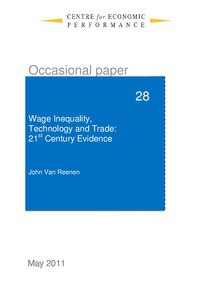Wage inequality, technology and trade: 21st Century evidence
"This paper describes and explains some of the principal trends in the wage and skill distribution in recent decades. There have been sharp increases in wage inequality across the OECD, beginning with the US and UK at the end of the 1970s. A good fraction of this inequality growth is due to tec...
| Main Author: | |
|---|---|
| Institution: | ETUI-European Trade Union Institute |
| Format: | TEXT |
| Language: | English |
| Published: |
London
2011
LSE |
| Subjects: | |
| Online Access: | https://www.labourline.org/KENTIKA-19177308124919955809-Wage-inequality,-technology-an.htm |
| Summary: | "This paper describes and explains some of the principal trends in the wage and skill distribution in recent decades. There have been sharp increases in wage inequality across the OECD, beginning with the US and UK at the end of the 1970s. A good fraction of this inequality growth is due to technology-related increases in the demand for skilled workers outstripping the growth of their supply. Since the early 1990s, labour markets have become more polarized with jobs in the middle third of the wage distribution shrinking and those in the bottom and top third rising. I argue that this is because computerization complements the most skilled tasks, but substitutes for routine tasks performed by middle wage occupations such as clerks, leaving the demand for the lowest skilled service tasks largely unaffected. Finally, I argue that technology is partly endogenous, for example it has been spurred by trade with China. Thus, trade does matter for changes in the labour market through inducing faster technical change rather than just through the conventional Heckscher-Ohlin mechanism. " |
|---|---|
| Physical Description: | 25 p. Digital |

